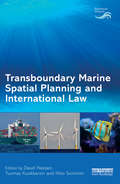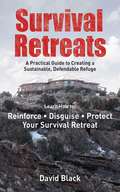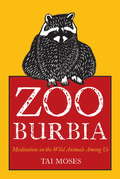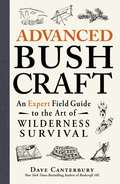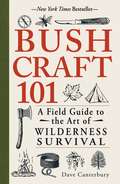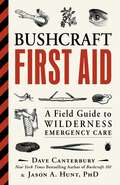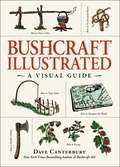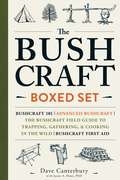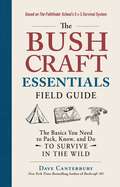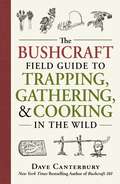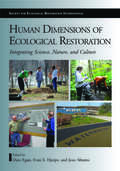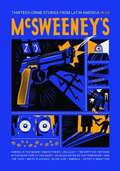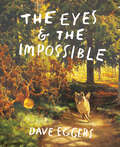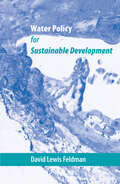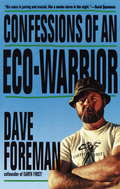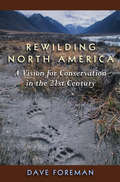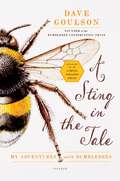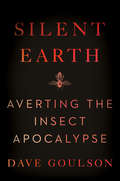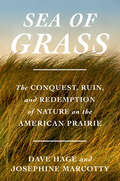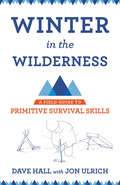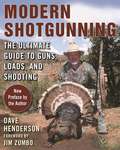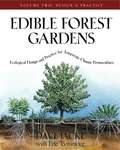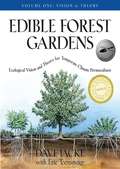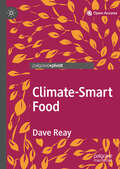- Table View
- List View
Transboundary Marine Spatial Planning and International Law (Earthscan Oceans)
by Daud Hassan Tuomas Kuokkanen Niko SoininenMarine Spatial Planning (MSP) is an integrated and comprehensive approach to ocean governance and is used to establish a rational use of marine space and reconcile conflicting interests of its users. MSP allows both a high level of environmental protection and a wide range of human activities and emphasizes coordinated networks of national, regional and global institutions. This book focuses on the framework of international law behind MSP and especially on the transboundary aspects of MSP. It first sets out a general framework for transboundary MSP and then moves on to compare and assess differences and similarities between different regions. Specific detailed case studies include the EU with the focus on the Baltic Sea and North Sea, the Bay of Bengal and Great Barrier Reef in Australia. The authors examine the national and regional significance of MSP from an integrated and sustainable ocean governance point of view. They also show how transboundary MSP can create opportunities and positive initiatives for cross-border cooperation and contribute to the effective protection of the regional marine environment.
The Planets
by Dava SobelA rich exploration of our solar system--what we know, what we wonder, what we believe.
Survival Retreats: A Prepper's Guide to Creating a Sustainable, Defendable Refuge
by James C. Jones Dave BlackNormally, retreats are built to blend in to their surroundings for the sake of secrecy, and are built by those who don’t want others to know anything about their retreat. Dave Black explores these places and gets to go where most people never go—through the chain link fence, past the guard dog, and into the rarely seen survival retreat. Not only will you learn how to protect them, but you will learn how and where to build them, and most importantly, what to do after you’ve fortified. There’s a lot to know and with this book you’ll be prepared for the inevitable apocalypse . . .
Zooburbia: Meditations on the Wild Animals Among Us
by Dave Buchen Tai MosesTo be alienated from animals is to live a life that is not quite whole, contends nature writer Tai Moses in Zooburbia: Meditations On The Wild Animals Among Us. Urban and suburban residents share their environment with many types of wildlife: squirrels, birds, spiders, and increasingly lizards, deer, and coyote. Many of us crave more contact with wild creatures, and recognize the small and large ways animals enrich our lives, yet don't notice the animals already around us.Zooburbia reveals the reverence that can be felt in the presence of animals and shows how that reverence connects us to a deeper, better part of ourselves. A lively blend of memoir, natural history, and mindfulness practices, Zooburbia makes the case for being mindful and compassionate stewards--and students--of the wildlife with whom we coexist. With lessons on industriousness, perseverance, presence, exuberance, gratitude, aging, how to let go, and much more, Tai's vignettes share the happy fact that none of us is alone and separate, and that our teachers are right in front of us. We need only go outdoors with our eyes and ears open to find a rapport with the animal kingdom. Zooburbia is a magnifying lens turned to our everyday environment, reminding us that we, as individuals and as a species, are not alone.Illustrated by Dave Buchen with original black and white wildlife linocuts.
Advanced Bushcraft: An Expert Field Guide to the Art of Wilderness Survival (Bushcraft)
by Dave CanterburyTrek deeper into the wilderness with New York Times bestselling author Dave Canterbury!In this valuable guide, survivalist Dave Canterbury goes beyond bushcraft basics to teach you how to survive in the backcountry with little or no equipment. Using the foundation you learned in Bushcraft 101, Canterbury shows you how to completely immerse yourself in the wilderness with advanced bushcraft and woodcraft techniques. He covers crucial survival skills like tracking to help you get even closer to wildlife, crafting medicines from plants, and navigating without the use of a map or compass. He also offers ways to improvise and save money on bushcraft essentials like fire-starting tools and packs. With Canterbury's expert advice and guidance, you will learn how to forgo your equipment, make use of your surroundings, and truly enjoy the wilderness.Whether you're eager to learn more after your first real outdoor adventure or have been exploring the backcountry for years, Advanced Bushcraft will help you take your self-reliance and wilderness experience to the next level.
Bushcraft 101: A Field Guide to the Art of Wilderness Survival (Bushcraft)
by Dave CanterburyThe ultimate resource for experiencing the backcountry!Written by survivalist expert Dave Canterbury, Bushcraft 101 gets you ready for your next backcountry trip with advice on making the most of your time outdoors. Based on the 5Cs of Survivability--cutting tools, covering, combustion devices, containers, and cordages--this valuable guide offers only the most important survival skills to help you craft resources from your surroundings and truly experience the beauty and thrill of the wilderness. Inside, you'll also discover detailed information on:Choosing the right items for your kit.Manufacturing needed tools and supplies.Collecting and cooking food.Protecting yourself from the elements. With Canterbury's guidance, you'll not only prepare yourself for any climate and situation, you'll also learn how to use the art of bushcraft to reconnect with nature in ways you've never imagined.
Bushcraft First Aid: A Field Guide to Wilderness Emergency Care (Bushcraft)
by Dave Canterbury Ph.D. Jason A. HuntFrom wilderness expert Dave Canterbury and outdoor survival instructor Jason Hunt comes the next installment in the New York Times bestselling Bushcraft series—a go-to first aid resource for anyone headed into the woods.Out in the woods or on top of a mountain, there’s no calling 9-1-1. Bushcraft First Aid teaches you how to be your own first responder. The authors’ years of experience and training will help hikers and backpackers deal with a variety of emergency situations, from cuts and burns to broken bones and head injuries. You’ll also learn what to pack and how to make bandages, dressings, and slings at a moment’s notice. As bushcraft experts, Canterbury and Hunt explain how to use plants as medicine to treat various conditions. Bushcraft First Aid provides the lifesaving information you need to keep yourself and your fellow hikers safe on the trail.
Bushcraft Illustrated: A Visual Guide (Bushcraft)
by Dave CanterburyFrom Dave Canterbury—wilderness expert, New York Times bestselling author, and YouTube sensation—comes a fully illustrated guide to everything you need to know to hone your bushcraft, or wilderness survival skills, from types of shelter, to useful tools, to edible plants—and much more!Before you venture into the wilderness, learn exactly what you need to bring and what you need to know with this ultimate outdoor reference guide, by survivalist expert Dave Canterbury. Filled with more than 300 illustrations, Bushcraft Illustrated showcases the necessary tools and skills for an awesome outdoor adventure, including such as: Packs: Learn the different types and how to craft and pack your own. Cordage: Essential knot knowledge for outdoor survival. Firecraft: How to start a fire with a variety of materials. Trapping: Tips for catching small game. Plants: A catalog of edible plants to forage. …And much more! With its many helpful illustrations and detailed, easy-to-follow instructions, this illustrated Bushcraft guide is a must-have for the seasoned outdoor lover and adventure novice alike!
The Bushcraft Boxed Set: Bushcraft 101; Advanced Bushcraft; The Bushcraft Field Guide to Trapping, Gathering, & Cooking in the Wild; Bushcraft First Aid (Bushcraft)
by Dave Canterbury Ph.D. Jason A. HuntThe Bushcraft Boxed Set brings together four titles from wilderness expert and New York Times bestselling author Dave Canterbury.The collection includes: Bushcraft 101: The primer to wilderness survival based on the author’s 5Cs of Survivability (cutting tools, covering, combustion devices, containers, and cordages) Advanced Bushcraft: Takes it to the next level with self-reliance skills that teach you how to survive with little to no equipment The Bushcraft Guide to Trapping, Gathering, and Cooking in the Wild: Provides everything you need to know about packing, finding, and preparing food while trekking Bushcraft First Aid: Written with Jason A. Hunt, PhD, it’s the go-to first aid resource for anyone headed into the woods With this boxed set, you’ll be prepped and ready for your next outdoor adventure—wherever it takes you!
The Bushcraft Essentials Field Guide: The Basics You Need to Pack, Know, and Do to Survive in the Wild (Bushcraft)
by Dave CanterburyLearn everything you need to know about outdoor survival so you can make it through any situation from top bushcraft expert and New York Times bestselling author Dave Canterbury.For years, Dave Canterbury has been teaching outdoor enthusiasts how to survive in the wild, and truly enjoy the experience. The Bushcraft Essentials Field Guide distills these teachings into the key takeaways campers and hikers need to know when they&’re out in the woods. How to start a fire. Where to build your shelter. What to put in your pack. Dave&’s advice is now right at your fingertips in the most accessible Bushcraft title to date. You can quickly flip and find answers to pressing questions about wilderness survival. From first aid to navigation to setting up camp, it&’s all provided in this small, portable book that&’s perfect whether you&’re on a day-hike, overnight, or multi-day trek. The Bushcraft Essentials Field Guide is what you need to know when you need to know it and exactly what you need for your next outdoor adventure.
The Bushcraft Field Guide to Trapping, Gathering, and Cooking in the Wild: Bushcraft 101; Advanced Bushcraft; The Bushcraft Field Guide To Trapping, Gathering, And Cooking In The Wild; Bushcraft First Aid (Bushcraft)
by Dave CanterburyWhat to eat, where to find it, and how to cook it! Renowned outdoors expert and New York Times bestselling author Dave Canterbury provides you with all you need to know about packing, trapping, and preparing food for your treks and wilderness travels. Whether you're headed out for a day hike or a weeklong expedition, you'll find everything you need to survive--and eat well--out in the wild. Canterbury makes certain you're set by not only teaching you how to hunt and gather, but also giving you recipes to make while on the trail. Complete with illustrations to accompany his instructions and a full-color photo guide of plants to forage and those to avoid, this is the go-to reference to keep in your pack. The Bushcraft Field Guide to Trapping, Gathering, and Cooking in the Wild helps you achieve the full outdoor experience. With it, you'll be prepared to set off on your trip and enjoy living off the land.
Human Dimensions of Ecological Restoration: Integrating Science, Nature, and Culture (Science Practice Ecological Restoration)
by Jesse Abrams Evan E. Hjerpe Dave EganHuman Dimensions of Ecological Restoration takes an interdisciplinary look at the myriad human aspects of ecological restoration. In twenty-six chapters written by experts from around the world, it provides practical and theoretical information, analysis, models, and guidelines for optimizing human involvement in ecological restoration projects. The book delves into the often-neglected aspects of ecological restoration that ultimately make the difference between projects that are successfully executed and maintaned with the support of informed, engaged citizens, and those that are unable to advance past the conceptual stage due to misunderstandings or apathy. The lessons contained will be valuable to restoration veterans and greenhorns alike, scholars and students in a range of fields, and individuals who care about restoring their local lands and waters.
McSweeney's Issue 46
by Dave EggersIn thirteen electrifying stories, our very first all-Latin-American issue takes on the crime story as a starting point, and expands to explore contemporary life from every angle-swinging from secret Venezuelan prisons to Uruguayan resorts to blood-drenched bedrooms in Mexico and Peru, and even, briefly, to Epcot Center and the Havana home of a Cuban transsexual named Amy Winehouse. Featuring contemporary writers from ten different countries-including Alejandro Zambra, Juan Pablo Villalobos, Andres Ressia Colino, Mariana Enriquez, and many more-McSweeney's 46 offers an essential cross-section of the troubles and temptations confronting the region today. It's crucial reading for anyone interested in the shifting topography of Latin American literature and Latin American life, and a collection of writing to rival anything we've assembled in years.
The Eyes and the Impossible
by Dave EggersFrom the award-winning author of The Every and the illustrator behind the beloved picture book Her Right Foot comes an endearing and beautifully illustrated story of a dog who unwittingly becomes a hero to a park full of animals. <p><p>Johannes, a free dog, lives in an urban park by the sea. His job is to be the Eyes—to see everything that happens within the park and report back to the park’s elders, three ancient Bison. His friends—a seagull, a raccoon, a squirrel, and a pelican—work with him as the Assistant Eyes, observing the humans and other animals who share the park and making sure the Equilibrium is in balance. But changes are afoot. <p><p>More humans, including Trouble Travelers, arrive in the park. A new building, containing mysterious and hypnotic rectangles, goes up. And then there are the goats—an actual boatload of goats—who appear, along with a shocking revelation that changes Johannes’s view of the world. <p><p>A story about friendship, beauty, liberation, and running very, very fast, The Eyes and the Impossible will make readers of all ages see the world around them in a wholly new way. <p> <b>New York Times Bestseller</b>
Water Policy for Sustainable Development
by Dave FeldmanThe shortage of fresh water is likely to be one of the most pressing issues of the twenty-first century. A UNESCO report predicts that as many as 7 billion people will face shortages of drinking water by 2050. Here, David Lewis Feldman examines river-basin management cases around the world to show how fresh water can be managed to sustain economic development while protecting the environment. He argues that policy makers can employ adaptive management to avoid making decisions that could harm the environment, to recognize and correct mistakes, and to monitor environmental and socioeconomic changes caused by previous policies. To demonstrate how adaptive management can work, Feldman applies it to the Delaware, Susquehanna, Apalachicola-Chattahoochee-Flint, Sacramento–San Joaquin, and Columbia river basins. He assesses the impacts of runoff pollution and climate change, the environmental-justice aspects of water management, and the prospects for sustainable fresh water management. Case studies of the Murray-Darling basin in Australia, the Rhine and Danube in Europe, the Zambezi in Africa, and the Rio de la Plata in South America reveal the impediments to, and opportunities for, adaptive management on a global scale.Feldman's comprehensive investigation and practical analysis bring new insight into the global and political challenges of preserving and managing one of the planet's most important resources.
Confessions of an Eco-Warrior
by Dave ForemanA book that will set the course for the environmental movement for years to come, Confessions of an Eco-Warrior is an inspiring ecological call to arms by America's foremost and most controversial environmental activist. "Rude and brilliant. Read it and you will see the future". --William Kittredge.
Rewilding North America: A Vision For Conservation In The 21St Century
by Dave ForemanDave Foreman is one of North America's most creative and effective conservation leaders, an outspoken proponent of protecting and restoring the earth's wildness, and a visionary thinker. Over the past 30 years, he has helped set direction for some of our most influential conservation organizations, served as editor and publisher of key conservation journals, and shared with readers his unique style and outlook in widely acclaimed books including The Big Outside and Confessions of an Eco-Warrior.In Rewilding North America, Dave Foreman takes on arguably the biggest ecological threat of our time: the global extinction crisis. He not only explains the problem in clear and powerful terms, but also offers a bold, hopeful, scientifically credible, and practically achievable solution.Foreman begins by setting out the specific evidence that a mass extinction is happening and analyzes how humans are causing it. Adapting Aldo Leopold's idea of ecological wounds, he details human impacts on species survival in seven categories, including direct killing, habitat loss and fragmentation, exotic species, and climate change. Foreman describes recent discoveries in conservation biology that call for wildlands networks instead of isolated protected areas, and, reviewing the history of protected areas, shows how wildlands networks are a logical next step for the conservation movement. The final section describes specific approaches for designing such networks (based on the work of the Wildlands Project, an organization Foreman helped to found) and offers concrete and workable reforms for establishing them. The author closes with an inspiring and empowering call to action for scientists and activists alike.Rewilding North America offers both a vision and a strategy for reconnecting, restoring, and rewilding the North American continent, and is an essential guidebook for anyone concerned with the future of life on earth.
A Sting In The Tale: My Adventures With Bumblebees
by Dave GoulsonDave Goulson became obsessed with wildlife as a small boy growing up in rural Shropshire, starting with an increasingly exotic menagerie of pets. When his interest turned to the anatomical, there were even some ill-fated experiments with taxidermy. But bees are where Goulson's true passion lies—the humble bumblebee in particular. <p><p> Once commonly found in the marshes of Kent, the English short-haired bumblebee went extinct in the United Kingdom, but by a twist of fate still exists in the wilds of New Zealand, the descendants of a few pairs shipped over in the nineteenth century. Dave Goulson's passionate quest to reintroduce it to its native land is one of the highlights of a book that includes original research into the habits of these mysterious creatures, history's relationship with the bumblebee, and advice on how to protect the bumblebee for future generations. <p> One of the United Kingdom's most respected conservationists and the founder of the Bumblebee Conservation Trust, Goulson combines lighthearted tales of a child's growing passion for nature with a deep insight into the crucial importance of the bumblebee. He details the minutiae of life in the nest, sharing fascinating research into the effects intensive farming has had on our bee population and the potential dangers if we are to continue down this path.
Silent Earth: Averting the Insect Apocalypse
by Dave Goulson“A terrific book…A thoughtful explanation of how the dramatic decline of insect species and numbers poses a dire threat to all life on earth.” (Booklist, Starred Review)In the tradition of Rachel Carson’s groundbreaking environmental classic Silent Spring, an award-winning entomologist and conservationist explains the importance of insects to our survival, and offers a clarion call to avoid a looming ecological disaster of our own making.Drawing on thirty years of research, Goulson has written an accessible, fascinating, and important book that examines the evidence of an alarming drop in insect numbers around the world. “If we lose the insects, then everything is going to collapse,” he warned in a recent interview in the New York Times—beginning with humans’ food supply. The main cause of this decrease in insect populations is the indiscriminate use of chemical pesticides. Hence, Silent Earth’s nod to Rachel Carson’s classic Silent Spring which, when published in 1962, led to the global banning of DDT. This was a huge victory for science and ecological health at the time.Yet before long, new pesticides just as lethal as DDT were introduced, and today, humanity finds itself on the brink of a new crisis. What will happen when the bugs are all gone? Goulson explores the intrinsic connection between climate change, nature, wildlife, and the shrinking biodiversity and analyzes the harmful impact for the earth and its inhabitants. Meanwhile we have all read stories about hive collapse syndrome affecting honeybee colonies and the tragic decline of monarch butterflies in North America, and more. But it is not too late to arrest this decline, and Silent Earth should be the clarion call. Smart, eye-opening, and essential, Silent Earth is a forceful call to action to save our world, and ultimately, ourselves.Silent Earth includes approximately 20 black-and-white illustrations and charts and graphs.
Sea of Grass: The Conquest, Ruin, and Redemption of Nature on the American Prairie
by Dave Hage Josephine MarcottyA vivid portrait of the American prairie, which rivals the rainforest in its biological diversity and, with little notice, is disappearing even faster&“This book describes—in loving, living prose—one of the world&’s greatest and most important landscapes. And it does so while there&’s still time to save some serious part of it.&”—Bill McKibben, author of The End of NatureThe North American prairie is an ecological marvel, a lush carpet of grass that stretches to the horizon, and home to some of the nation&’s most iconic creatures—bison, elk, wolves, pronghorn, prairie dogs, and bald eagles. Plants, microbes, and animals together made the grasslands one of the richest ecosystems on Earth and a massive carbon sink, but the constant expansion of agriculture threatens what remains.When European settlers encountered the prairie nearly two hundred years ago, rather than a natural wonder they saw an alien and forbidding place. But with the steel plow, artificial drainage, and fertilizers, they converted the prairie into some of the world&’s most productive farmland—a transformation unprecedented in human history. American farmers fed the industrial revolution and made North America a global breadbasket, but at a terrible cost: the forced dislocation of Indigenous peoples, pollution of great rivers, and catastrophic loss of wildlife. Today, industrial agriculture continues its assault on the prairie, plowing up one million acres of grassland a year. Farmers can protect this extraordinary landscape, but trying new ideas can mean ruin in a business with razor-thin margins, and will require help from Washington, D.C., and from consumers.Veteran journalists and midwesterners Dave Hage and Josephine Marcotty reveal humanity&’s relationship with this incredible land, offering a deep, compassionate analysis of the difficult decisions as well as opportunities facing agricultural and Indigenous communities. Sea of Grass is a vivid portrait of a miraculous ecosystem that makes clear why the future of this region is of essential concern far beyond the heartland.
Winter in the Wilderness: A Field Guide to Primitive Survival Skills
by Dave Hall Jon UlrichCamping or backpacking in winter is appealing for many who enjoy the serenity of wilderness settings without the crowds and bustle of the summer season. But as rewarding as they can be, these outings require special preparation and a different set of skills than are necessary at other times of the year. Snowfall can quickly cover one's tracks and make orientation difficult. Hypothermia is insidious, and rapidly changing weather conditions can become treacherous, even life-threatening. In addition to those who are exploring the outdoors recreationally, there are also those who find themselves in unexpected winter survival situations. Each year, people become stranded in wilderness areas, and in most cases they are not equipped to face the challenge of spending an indefinite amount of time outside. Without sufficient gear or knowledge of how to improvise without it, injury or death is often the result. The development of some basic skills, however, can help avert such unfortunate outcomes. As the founder of the renowned nature awareness program Primitive Pursuits, Dave Hall has been practicing survival skills for more than twenty years and has amassed a comprehensive understanding of winter survival. By refining these skills, Dave has reached a point of understanding that is without peer. Through detailed explanations, illustrations, and personal anecdotes, Winter in the Wilderness imparts Dave's knowledge to readers, who will learn to meet their most basic needs: making fire, creating shelter, obtaining safe drinking water, navigating terrain, and procuring sustenance. Winter in the Wilderness is a handbook for those who want to explore cold-weather camping and those who might find themselves in need of this critical information during an unexpected winter’s night out. Whether used for pleasure or for survival, Winter in the Wilderness emphasizes the benefits of enriching and deepening our connection with the outdoors.
Modern Shotgunning: The Ultimate Guide to Guns, Loads, and Shooting
by Dave Henderson Jim ZumboEvery year millions of sportsmen and women take to America's fields and forests equipped with some type of shotgun. Millions of others participate annually in shotgun sports such as skeet, trap and sporting clays. In Modern Shotgunning, Dave Henderson gives readers a nuts-and-bolts look at modern shotguns. He explains chokes, stocks, barrels, and optics, as well as cleaning and safety practices. He also discusses how to choose the appropriate shotgun, shotgun games, gun fit, hand loading, and building your own specialty guns. Henderson doesn't write above his readers either, offering plainly written advice based on years of experience in the field and at the range. He writes without boast that in a year he probably shoots more rounds than do most hunters in a lifetime. Neither is Henderson leaning toward the heavy-wallet crowd, for he knows the average hunter may not care for or cannot afford two-thousand-dollar shotguns, souped-up slug guns or optics. He offers tips for the budget-conscious, such as creating a cleaning rod from a soft pine dowel with a bicycle handlebar grip on one end and using Bounty paper towels rolled to bore diameter as a cleaning patch. Modern Shotgunning is ideal for beginners but not to be overlooked by veterans.
Edible Forest Gardens: Ecological Design And Practice For Temperate Climate Permaculture (Volume #2)
by Eric Toensmeier Dave JackeIn Volume II, Dave Jacke and Eric Toensmeier move on to practical considerations: concrete ways to design, establish, and maintain your own forest garden. Along the way they present case studies and examples, as well as tables, illustrations, and a uniquely valuable "plant matrix" that lists hundreds of the best edible and useful species.
Edible Forest Gardens: Ecological Vision And Theory For Temperate Climate Permaculture Volume 1
by Eric Toensmeier Dave JackeEdible Forest Gardens is a groundbreaking two-volume work that spells out and explores the key concepts of forest ecology and applies them to the needs of natural gardeners in temperate climates. Volume I lays out the vision of the forest garden and explains the basic ecological principles that make it work.
Climate-Smart Food
by Dave ReayThis open access book asks just how climate-smart our food really is. It follows an average day's worth of food and drink to see where it comes from, how far it travels, and the carbon price we all pay for it. From our breakfast tea and toast, through breaktime chocolate bar, to take-away supper, Dave Reay explores the weather extremes the world’s farmers are already dealing with, and what new threats climate change will bring. Readers will encounter heat waves and hurricanes, wildfires and deadly toxins, as well as some truly climate-smart solutions. In every case there are responses that could cut emissions while boosting resilience and livelihoods. Ultimately we are all in this together, our decisions on what food we buy and how we consume it send life-changing ripples right through the global web that is our food supply. As we face a future of 10 billion mouths to feed in a rapidly changing climate, it’s time to get to know our farmers and herders, our vintners and fisherfolk, a whole lot better.
